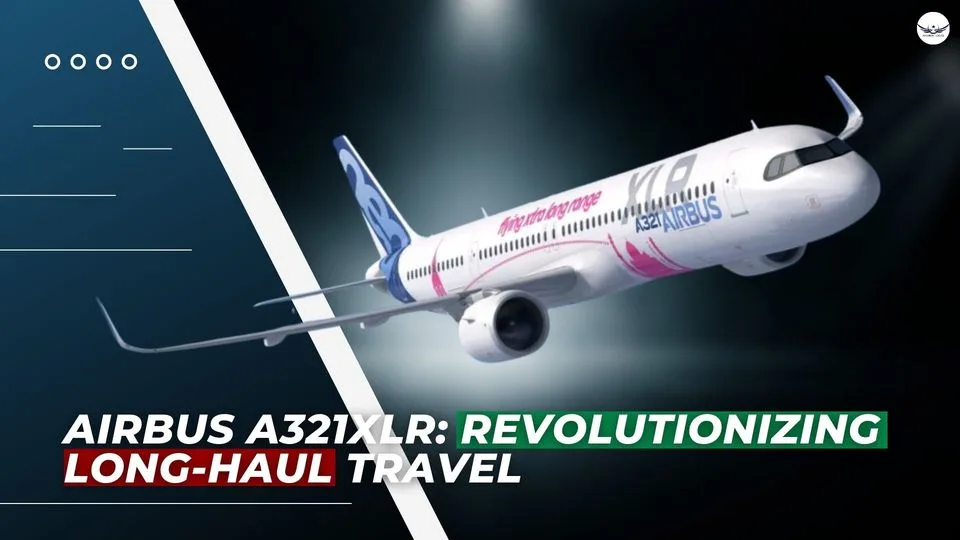Your cart is currently empty!
Airbus A321XLR: A Narrow Body Game-Changer
The Airbus A321XLR stands as the most recent narrow-body aircraft from the European manufacturer, EADS. The Airbus A321XLR is set to reshape the aviation industry. It boasts an impressive extended range of 4,700 nautical miles. This extended range caters to the growing demand for long-haul flights. It holds a strategic advantage over other narrow-body aircraft. That’s because of its extraordinary long-range capability of 4700nm. It enables non-stop 11-hour flights while achieving a remarkable 30% reduction in fuel consumption. Additionally, it ensures passenger comfort with an award-winning airspace interior during long-haul journeys.
A321XLR’s Evolution: A Brief History
The A321XLR represents a further refinement of Airbus’s A321 aircraft series. It can be seen as an enhancement of the A321 model. The A321 model, itself, represents an extended-range variant of the A321neo. The A321neo is a more advanced version of the original A321 aircraft. Going back to the roots, the original A321 was created by extending the design of the main A320 aircraft. This extension resulted in a larger and more capable airplane.
Airbus A321XLR’s Strategic Purpose
The motive behind the development of the A321XLR is that certain routes could only be economically viable with wide-body aircraft. These routes require a significant passenger count to be profitable. Many travelers rely on major airports like Frankfurt and New York’s JFK for their journeys between Europe and North America. Smaller planes, however, struggle to efficiently cover these extensive distances. Airlines prefer larger planes to maximize valuable landing slots at these hubs.
The A321XLR is a smaller yet transatlantic-capable aircraft. This allows smaller upstate airports to attract airlines by offering cost-saving incentives like reduced landing fees. Which ultimately boosts profitability for both airlines and airports.
Read More About Airbus A321XLR Specification and Features
Airbus A321XLR Battle in Long-Haul Market
One of the A321XLR’s primary competitors in the long-haul sector is the Boeing 757. The Boeing 757 has been a workhorse for airlines, boasting a range capability of 3,900 nautical miles. However, the A321XLR is aiming to surpass it. With a significantly enhanced range of 4700nm, Airbus’s A321XLR is positioned to challenge the Boeing 757’s dominance in the long haul sector.
Airbus’ Award-Winning Airspace Interior
Airspace Interior of Airbus has earned prestigious recognition through the Crystal Cabin Award. Which Airbus has received for its exceptional dedication to delivering the finest Airspace Interior. Airspace interior gives personalized passenger experiences, comfort, and high-quality in-flight services. The A321XLR, with a passenger capacity of 244, stands alone in the category of narrow-body aircraft. It is the only single-aisle airliner offering generously spacious 18-inch wide seats in its economy class. Furthermore, it extends its commitment to excellence. This includes providing premium-class travelers with ancillary services. Such as XL overhead storage bins and state-of-the-art in-flight entertainment (IFE) technology. Additionally, they offer uninterrupted connectivity, fully reclining seats, and lavish suites.
A321XLR: The Optimal Choice for Low-Risk Route Opening
The A321XLR is the optimal choice for routes with minimal risk, serving as the perfect option for point-to-point destinations. A321XLR facilitates wide-body aircraft and effectively manages seasonal demand shifts by using the same routes during off-peak times.
A321 Xtra Long Range: Unlocking New Long-Haul Possibilities
The remarkable feature of the A321XLR is its extended range of 4,700 nautical miles. It facilitates seamless connections on long routes, such as Tokyo to Los Angeles or Dubai to Toronto, with continuous, non-stop flights of up to 11 hours. This exceptional range evolution began with the A321neo, boasting a range of 3,500 nautical miles. Airbus expanded this range by 15% to create the A321LR, extending its reach to 4,000 nautical miles. Airbus then enhanced it by a further 15% to give rise to the A321XLR.
Single-aisle economics on wide-body routes
The extra benefit of the A321XLR’s extended range of 15% is an additional profit of $11 million. Which accounts for only 10% of its yearly travel earnings. The A321XLR offers significant cost advantages compared to modern wide-body aircraft. It reduces trip costs by an impressive 45%, meaning airlines can operate it more efficiently and economically on long-distance routes. Additionally, it consumes 30% less fuel per seat than older-generation aircraft, contributing to both cost savings and environmental sustainability.
Airbus A321XLR Order and Delivery Update
Airbus’ A321XLR service delivery has been postponed from late 2023 to early 2024 due to certification requirements. At the 2023 Paris Airshow, Airbus unveiled the game-changing A321XLR, attracting attention worldwide. Airbus secured more than 500 orders from nearly 20 global airlines. LATAM, a South American airline, placed the largest order with 64 aircraft. American and United Airlines ordered 50 each, while Qantas ordered 20, Frontier Airlines 18, and JetBlue 13. Airbus aims to achieve A321XLR certification by year-end and begin deliveries in the second quarter of 2024.
Similar Post
Comments
One response to “Airbus A321XLR: Revolutionizing Long-Haul Travel”
-
[…] continue to power A322 with its already certified P&W PW1100G and CFM LEAP-1A Engines. The A321 XLR the extended version of A321 Neo and A321 LR can fly nonstop for 11 hours giving a range of 4,700 […]






Leave a Reply